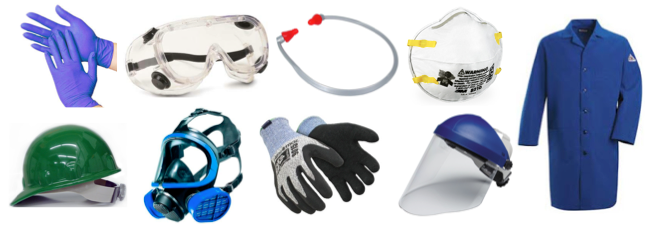Section outline
-
-
Welcome to Safety and Health in Engineering!We hope you will have a wonderful time exploring the many interesting topics in this course.
 Course InformationBy the end of the course you should be able to•Understand the nature and concepts of current safety and health practice•Select safe working procedures that suits various engineering problems•Analyze engineering activities for the identification of hazards and assessment of risks
Course InformationBy the end of the course you should be able to•Understand the nature and concepts of current safety and health practice•Select safe working procedures that suits various engineering problems•Analyze engineering activities for the identification of hazards and assessment of risks
-
-
Unit ObjectivesBy the end of this unit, students will be able to:•Understand the concept of occupational safety and health (OSH)•Understand the importance of workplace safety•Discuss the statutory requirements under OSHA 1994•Describe the roles of safety and health organizations in Malaysia
-
(1) Introduction & History
1.1 Introduction to OSH
-
(2) Concept of OSH
-
(3) Importance of Workplace Safety
-
(4) Legislative Framework
-
(5) Roles of Safety & Health Organizations in Malaysia
1.5 Roles of Safety and Health Organizations in Malaysia
-
-
-
Unit Objectives
By the end of this unit, students will be able to:
•Define hazard, risk and danger•Explain the different types of hazards•Explain risk assessment (qualitative and semiquantitative)•Discuss risk control using hierarchy of control•Identify and create HIRARC for a small task/activity -
(1) Introduction & Overview
3.1 Introduction and Overview
-
2) Job Hazard Analysis (JHA)
3.2 Job Hazard Analysis
-
(3) Risk Assessment
-
(4) Risk Control and Hierarchy of Control
-
Supplementary Readings
-
-
-
Unit ObjectivesBy the end of this unit, students will be able to:•Explain the issues (statistics) associated with poor electrical safety in the labs.•Recall key electrical terms which are essential to understanding and meeting the requirements of key electrical safety standards.•Describe types of electrical hazards to personnel and describe the nature of the hazards•Define an “Electrically Safe Lab Condition” and list specific steps to be taken to ensure an electrically safe work condition•Explain how the creation of an electrically safe work condition can involve hazards and the methods to protect against them.•Describe other safety related lab practices to protect from electrical hazards.
-
Hi everyoneWelcome to the introduction to Electrical Safety course.In this course, you will be introducing with issues (statistics) associated with poor electrical safety in the labs and types of electrical hazards.
-
-
Electricity is an important part of our modern world and sometimes it is easy to forget just how dangerous it can be.
Given the correct circumstances, electricity can cause serious injuries or even death.
-
-
Requirements for protect from electrical hazards
To avoid injuries, you should be aware of electrical hazards. Some of the most common electrical hazards are:
•Exposed electrical parts•Overloaded circuits•Defective insulation•Improper grounding•Damaged power tools•Overhead power lines•Wet conditions -
-
-
-
By the end of this unit, students will be able to:
•Identify the different types of PPE used in the workplace•Explain the importance of the correct selection and use of PPE•Describe the basic types of PPE•Describe the requirements for properly storing and maintaining PPE -
•Identify the different types of PPE used in the workplace•Describe the basic types of PPE

Types of PPE
-
Background Colour
Font Face
Font Size
Text Colour
Font Kerning
Image Visibility
Letter Spacing
Line Height
Link Highlight

